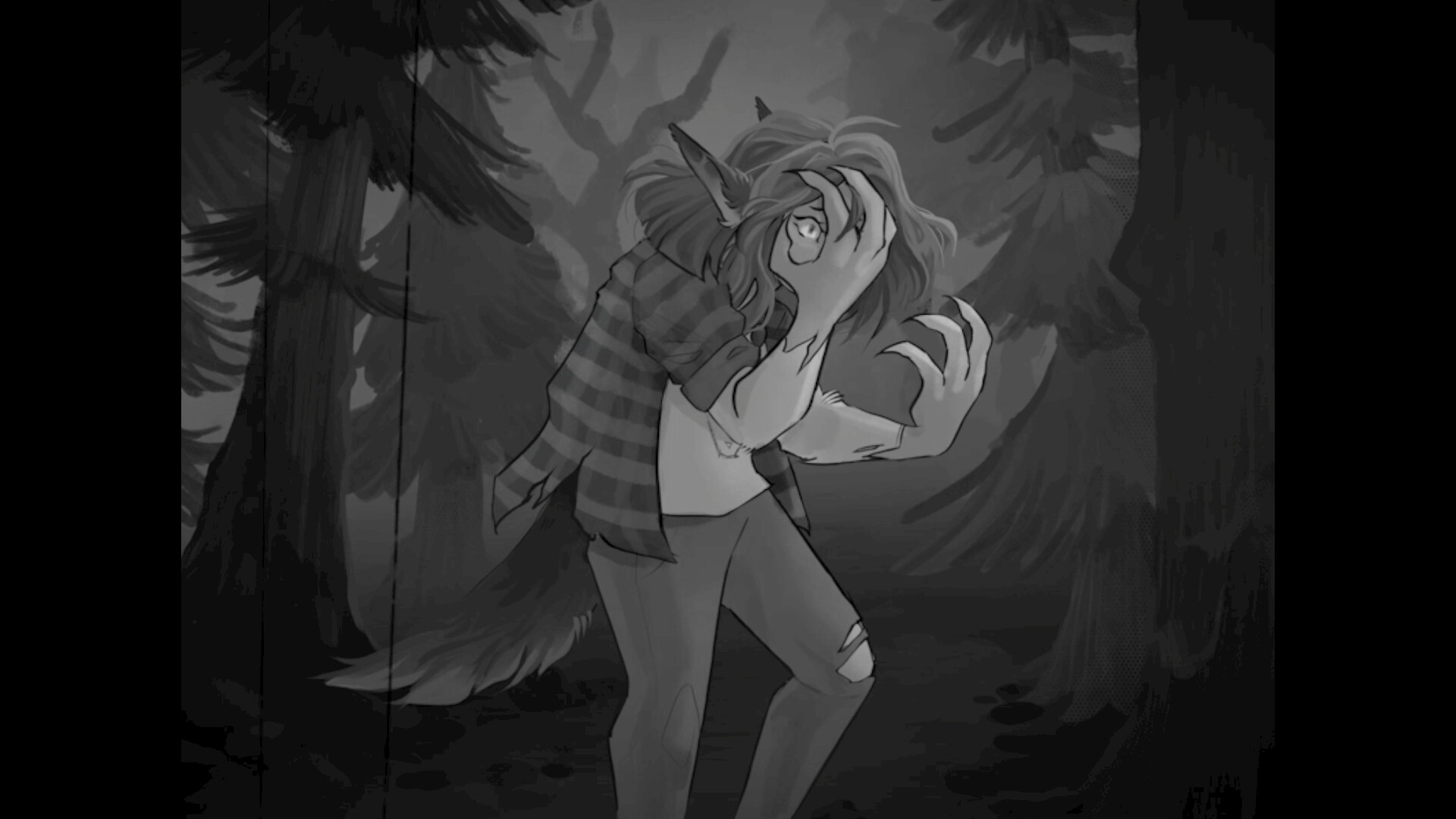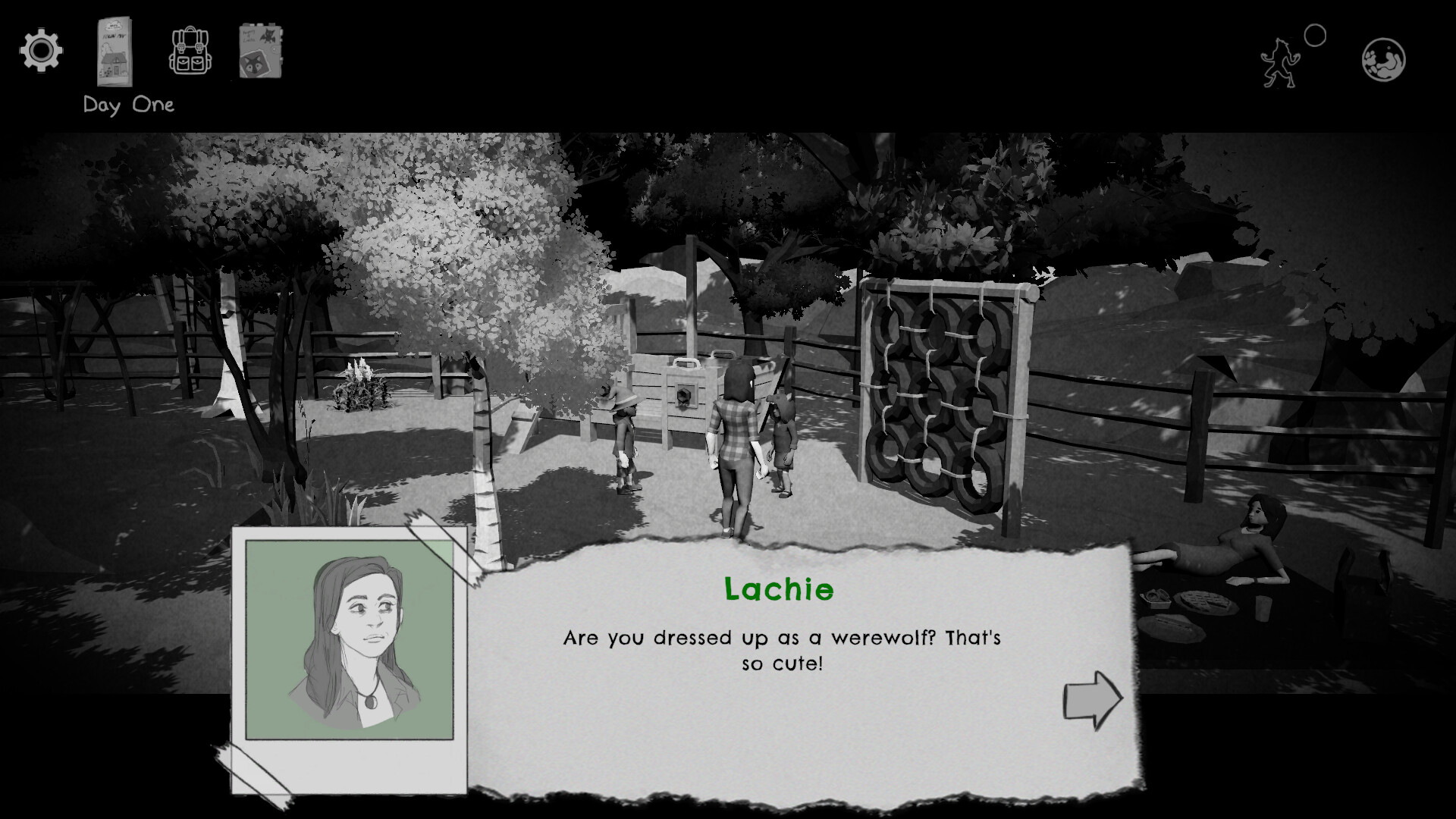Combating stigma one howl at a time
Coming up to PAX I’ve been intrigued by a bunch of Aussie games with great messages, one being The Last Werewolf. The Last Werewolf was showcased at this year's Games for Change APAC, running as part of Melbourne International Games Week and I sat down with Rebecca ‘Bec’ Kerr (she/they) from Unnatural Freaks studio to find out more.
Made in Perth, WA and supported by Screenwest, The Last Werewolf is an interactive narrative that follows a young woman named Lachie and her journey of self-discovery as she confronts her new identity as a werewolf.
The game describes itself as a powerful allegory for Bipolar disorder designed to build empathy and awareness for those affected, written from a place of authentic lived experience and understanding.
“I've watched a few things and it's just always showing the dark side [of bipolar] in really heavy, heavy ways. So I was trying to bring some of the lightness into it,” Bec explained.
“I think we shouldn't have to hide in the shadows, which is a topic that kind of comes up in the game a lot, that they've got to hide it - if you leave it to only the extremes being shared, then that's what people are going to think. It's always just extremes.”
Bec, who is currently in higher education, lives with bipolar II disorder which is categorised by alternating periods of depression and hypomania. They said that when they considered doing a PHD on interactive narrative they also wanted to focus their study on Bipolar disorder, infusing experiences from both their own life and the lives of others into the game as well as research.
“One of the benefits I find of the extended development time in early access is that I will have an episode and then I'm like, a couple of these experiences would probably work well in this game. I'm just going to put that in there,” she told me.
“I'm desperately hoping to raise [awareness that] we're normal people. We just have some slight balancing issues. We understand our moods can swing and it can be scary for people, but that's why communication is so important.”
I myself have a range of people in my life with different types of bipolar, and I saw them reflected in the stories of various characters throughout the game. While the game mainly focuses on the mania side rather than depression, I was glad to see that The Last Werewolf explores not only highs and lows but complex topics such as suicide, genetics, identity, grief, sensationalism, and being unable to pursue passions.
“That's part of my story. I wanted to get into science. I was great at math. And once this kicked in, math went out the window. I just couldn't do it anymore and it's painful… Now that I'm in storytelling, I can bring a bit of that in.”

When I first heard of The Last Werewolf, I was curious to know how such a scary creature can be used to combat fear and stigma. Bec explained that werewolves are actually a lot more complex than this and that she knows people in the community that use the term.
“We’re kind of happy to use that analogy... Werewolves, especially through folklore, there are the stories where it is ‘run away,’ fearful, but then you've got the other stories where they are guardians and they look out for people and others who have been cursed.”
I was instantly captivated by the art style in this game which Bec says was inspired by black and white horror films such as Werewolf By Night.
“[Black and white] can be shown as bipolar as well... there's a bit of green in there now which coincidentally lined up with green being the color for the ribbons for mental health.”
She also said that difficulty retaining staff was an issue when trying to keep the art style cohesive.
“We're getting a nice, healthy industry here in Perth, but they're all very small teams, the few narrative people we have, they're being pulled on so many projects and the artist I originally had for the sketching who I was gonna bring on more, she ended up jumping on a team full time, which is fantastic,” she explained.
“The initial scenes for each chapter are a different art style because the artist who did all the other cut scenes was no longer available. So I had to bring someone on and I could make it work... we just have a different, grungy feel to it.”

The game Oxenfree was a source of inspiration for Bec, and she spoke to me about how as someone with Bipolar Disorder, it can be easy to get addicted to longer games.
“I get so focused in. I don't sleep and that is the worst thing to happen for bipolar, you're supposed to sleep, otherwise you trigger an episode and then it just feeds upon itself - I know a lot of people stay away from interactive narratives because they think there's fighting or harsh puzzles. Oxenfree is just a narrative, but you get to walk around the space and it's three puzzles - I would call them mini activities, because they're not too complex. I like those stories and when they're short I can do it in an afternoon. Instead of like addicted hours and hours.
She also said that there needs to be a wider range of short games that focus on mental health.
“Having more games that follow mental health that are a bit more open to non game players as well.

The first day of Pax is World Mental Health Day, and Bec thinks that makes it the perfect day to showcase their game.
“At PAX, I'm going to try and raise money for SANE Australia because they, I believe, have helped with a lot of things with stigma.”
SANE Australia created the Stigma Watch program, which Bec has used to help with the game’s tone. I found it interesting to learn that these tools can be helpful even for people with the disorder they are writing about.
“How can I approach things to make sure I'm not, you know, using words that I'll use myself, but it's probably not good to use in general,” she clarified.
She encourages people to come down to PAX and try out the game.
“Feedback is so essential for any dev, just to make sure things are landing. And because (I am) trying to get people who love narrative into interactive narratives as well.”
They also hope it will help not only people living with bipolar disorder but also their loved ones, as well as others wanting to learn more about the disorder.
“Hopefully, if people with bipolar feel like they connect, then they can potentially give it to family and friends to go, 'hey, give this a go.' ”
